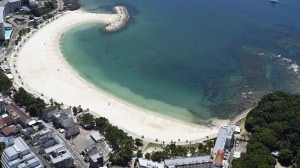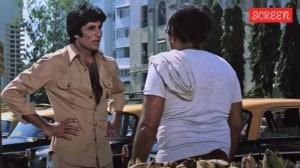Mumbai: 150-yr-old heritage in concrete jungle
The Dadabhai Naoroji Road was earlier called the Hornby Road, after William Hornby, who was Governor of Bombay from 1771 to 1784 under the British East India Company.
 The Dadabhai Naoroji Road in Fort. Ganesh Shirsekar
The Dadabhai Naoroji Road in Fort. Ganesh Shirsekar
With the turn of the 21st century, Dadabhai Naoroji Road, a heritage road also known as the Heritage Mile, not only helped create new standards for heritage streetscape in the city but also became a model for private-public partnership. The road is one of the main commercial districts in Fort area which stretches from Crawford Market to Chhatrapati Shivaji Terminus, finally leading to Flora Fountain. The buildings along this stretch were built mainly in the 19th century in Neo-Classical and Gothic Revival Style. The Brihanmumbai Municipal Corporation headquarters and the J J School of Arts are also located along this stretch. According to historical accounts, this road was earlier called the Hornby Road, after William Hornby, who was Governor of Bombay from 1771 to 1784 under the British East India Company. The Hornby Road was apparently converted into a broad avenue with buildings coming up along it during the boom in 1885-1919. By 1989, under the public design controls imposed by the City Improvement Trust, Hornby Road developed as one of the prime urban design statements in the city.
According to the Design Handbook comprising the streetscape guidelines for D N Road, “The history of D N Road can be traced back almost 150 years when it was a mere street running along the bastions of the old fort. Along the inner edge of the western ramparts between Bazaar Gate and Church Gate ran Hornby Road, which was regarded as a fashionable street since the 1850s.”
The road was named after Dadabhai Naoroji, the Indian nationalist leader known as the “Grand Old Man of India” after Independence. His statue, bespectacled with a Parsi hat and a book in one hand, overlooks the iconic Flora Fountain today.
Over the years, with the changing of the name of the road, other changes such as the haphazard growth along this road led to encroachment of the colonial facade of the buildings with all kinds of signages besides hawking activities on the pavements.
With the Heritage Regulations for Greater Bombay 1995, the entire stretch of Dadabhai Naoroji Road was declared a heritage streetscape, with each edifice along this spine assigned Grade II-A classification. The regulation advised ‘intelligent conservation of the area.’
To revive the area, Mumbai Metropolitan Regional Development Authority started a conservation project titled “Dadabhai Naoroji Road Heritage Streetscape Project.”
A trust called the MMR Heritage Conservation Society was instituted to provide grants and funding for documentation and research studies.
Conservation architect Abha Narain Lambah was then roped in for the D N Road streetscape project. Talking about the project, Lambah said, “In 1998, the MMR Heritage Conservation Society approached me for a project for creating streetscaping guidelines for D N Road. In November 1999, I presented a Design Handbook for a Heritage Streetscape, Guidelines for Signage and Street furniture for Dadabhai Naoroji Road, which was the first such urban conservation control handbook in India, “ said Lambah.
The first struggle was getting approval from BMC for the project. “Kiran Achrekar who is now the deputy municipal commissioner but back then was a local ward officer helped with organising of meetings of shopkeepers, commercial institutions where presentations were made about the project. The shopkeepers voluntarily decided to embrace the changes and agreed to put up new signages and later formed the Heritage Mile Association to help in better maintenance of the area,” said Lambah.
UNESCO eventually awarded the “Asia-Pacific Heritage Award of Merit” in 2004 to the project.
Deadlines were made and the shopkeepers voluntarily decided to embrace the new signages revealing the arches.
This happened in 1998-2000. “As the first step towards public-private partnership, the shopkeepers agreed to pay for the street furniture outside their shops,” added Lambah. What also helped were orders from the Bombay high Court ordering billboards to be removed from this area.
Achrekar remembers the project for being a rare case where everyone came together to make it possible. “The area was declared as a no-hawking zone eventually. This project was a turning point in many ways,” he said.
The street furniture was designed keeping the heritage character in mind. “Several meetings took place and by 2001, a majority shops’ fronts had conformed with the guidelines. This led to the forming of our association. The major hurdle towards making this project a success was removing the hawkers from here which was eventually achieved,” said R H G Mendonsa, secretary of the Heritage Mile Association and managing director of Lawrence & Mayo.
Have a comment or suggestion for Street Wise? Write to mumbai.newsline@expressindia.com with subject line: Street Wise












